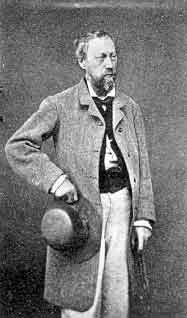
Home |
||
|---|---|---|
Before the exhibitions |
Eight Impressionism exhibitions |
After the exhibitions |
|
||
On the way
Developments on the way to Impressionism:
Boudin, Jongkind, the invention of photography,
Atelier Gleyre, Académie Suisse, Salon des Refusés
Claude Monet spent his youth in Le Havre. He began his artistic career with caricatures, which he exhibited and sold with some success in a local picture frame shop. What initially annoyed him was that the dealer's shop windows also displayed pictures by Eugène Boudin, which Monet regarded as absolutely hideous.
This opinion changed when the two met and Boudin asked him to draw more than just these caricatures, as Boudin had immediately recognised Monet's talent. However, it was some time before Monet changed his disparaging opinion and followed the older artist into nature, watching and learning to see and then paint what he saw.
Eugène Boudin
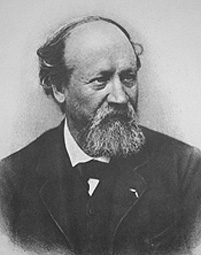
Eugène Boudin
* 12. 7. 1823 in Honfleur; † 8. 8. 1898 in Deauville
Before Boudin came to painting, he had already travelled through several professional stages. He had also painted several pictures and Jean-François Millet encouraged him to devote himself exclusively to art. He then studied in Paris and travelled to Prague, Venice, Flanders and the south of France. However, he remained loyal to his native Normandy for the rest of his life. He also became acquainted with Courbet and other painters.
He often took part in the Paris Salon and also in the first Impressionist exhibition in 1874.
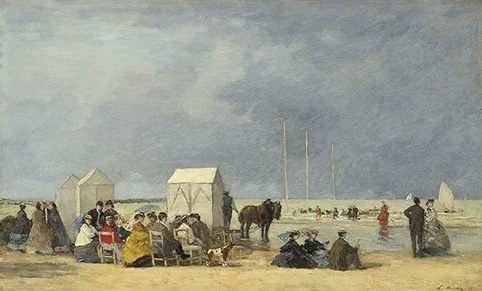
Temps de baignade à Deauville
1865 - 34,7 x 57,5 cm - Oil on wood
National Gallery of Art, Washington, USA >
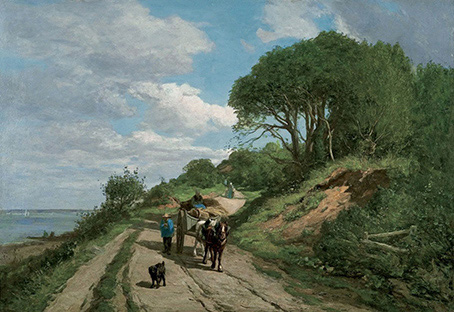
La route de Trouville (près du Butin), Honfleur
ca. 1855/60 - 57 x 83 cm - Oil on canvas
Musée Eugène Boudin, Honfleur, France
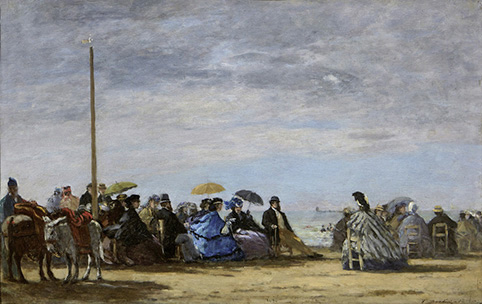
La Plage
1864 - 42 x 59 cm - Oil on canvas
Art Gallery of New South Wales, Sydney, Australia >
While the Barbizon artists had discovered the great outdoors to paint, they were not entirely consistent and carried out most of their work at home, always finishing their paintings in the studio.
For Boudin, what he painted outdoors always had more vigour, freshness and liveliness of brushstroke... He therefore carried out his work in nature, often by the sea.
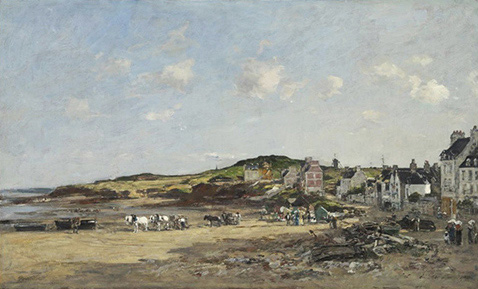
Portrieux
1874 - 54 x 88 cm - Oil on canvas
Magyar Szépmüvészeti Múzeum, Budapest, Hungary >
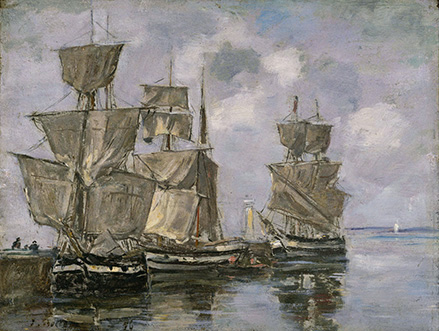
Navires dans le Port à Honfleur,
1856 - 20,3 x 26,5 cm - Oil on wood
Princetown University Art Museum, Princetown, USA >
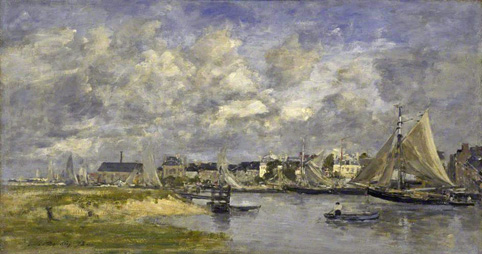
Le port de Trouville
1873 - 31 x 58 cm - Oil on wood
National Galleries Scotland, Edinbourgh, Scotland >
Boudin said to Monet: "Study, learn to look and paint; draw and paint landscapes! Sea and sky, animals, people and trees are as beautiful as nature has created them, in their uniqueness, their authenticity in light and air."
Monet commented: "With infinite patience, Boudin took over my education. Slowly my eyes opened and I began to really understand nature, and at the same time I learnt to love it!"The Impressionists saw Eugène Boudin as one of their immediate predecessors and role models for their new ideas, which he anticipated to some extent.
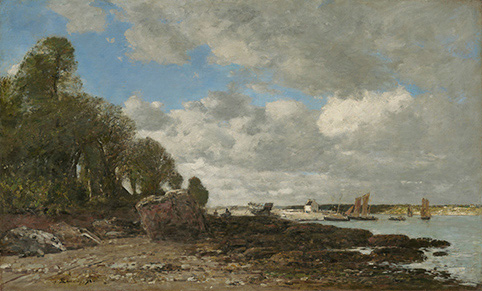
Plougastel, La traversée en ferry
1873 -54 x 88 cm - Oil on canvas
The Clark Art Institue, Williamstown, USA >
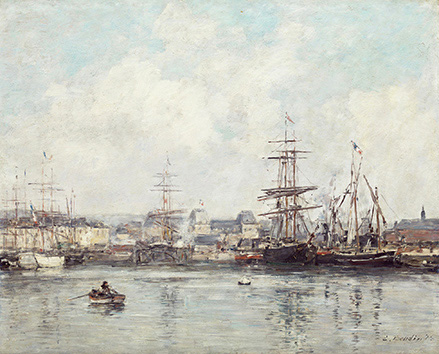
Casimir Delavigne Basin de Le Havre
1874 - 37 x 47 cm - Oil on wooden panel
Detroit Institute of Arts, Detroit, USA >
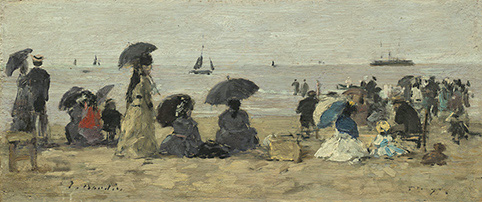
La Plage
1877 - 11 x 25,5 cm - Oil on wood
National Gallery of Art, Washington, USA >
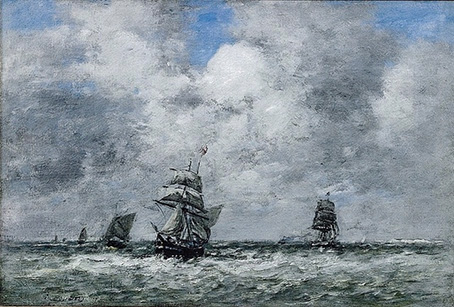
Bateaux à voile sur la mer
1873 - 33 x 46 cm - Oil on canvas
Pola Museum of Art, Hakone, Japan >
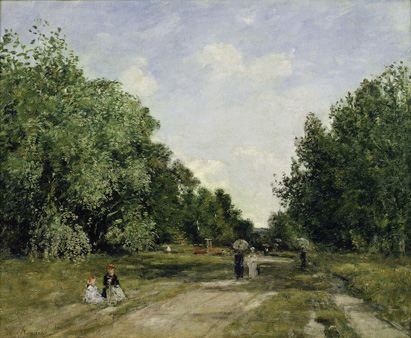
Parc Cordier à Trouville
1880/85 - 51 x 62 cm - Oil on canvas
Museu Nacional d'Art de Catalunya, Barcelona, Spain >
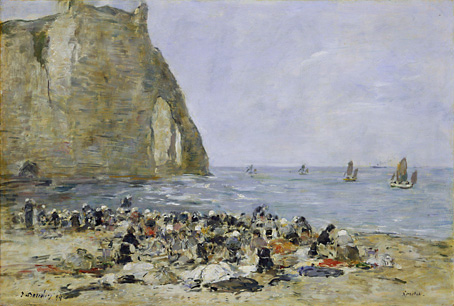
Crépuscule sur le bassin du Commerce au Havre
1892/94 - 40 x 55 cm - Oil on canvas
National Gallery of Art, Washington, USA >
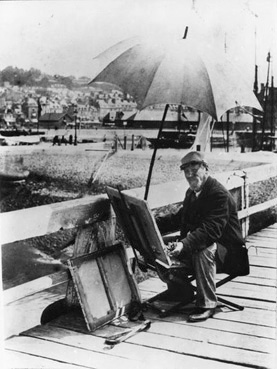
Boudin painting
In addition to Boudin, Johan Jongkind must also be mentioned in connection with the pioneers of Impressionism. A Dutchman, also a forerunner of the Impressionists - it was probably not a purely French development...
Johan Barthold Jongkind
Johan Jongkind
* 3. 1. 1819 in Lattrop (Overijssel); † 9. 2. 1891 in La Côte-Saint-André
During his productive period, Jongkind lived mainly in France (Paris, Brittany). He can be seen as a link between Corot and Monet, and together with Boudin, with whom he was close friends, he also exerted some influence on the latter. An early role model, as can be seen from Monet's own notes.
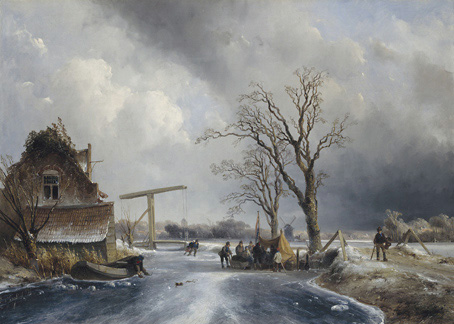
Scène d'hiver en Hollande
1846 - 55 x 79 cm - Oil on canvas
Art Gallery Den Haag, Netherleands >
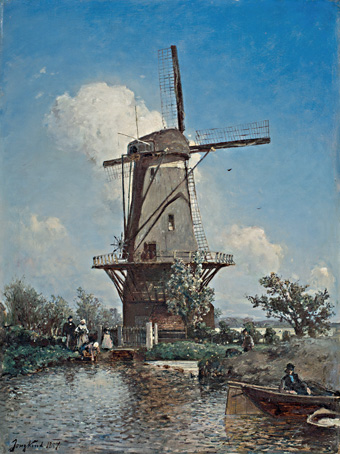
Moulin près de Delft
1857 - 56 x 42 cm - Oil on canvas
Museo Nacional Thyssen-Bornemisza, Madrid, Spain >
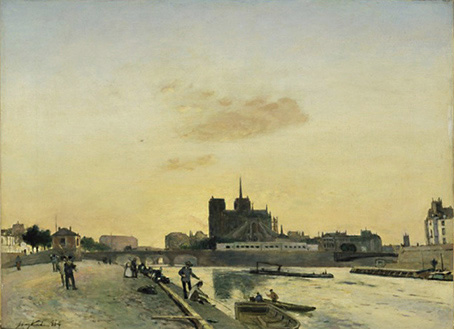
Vue de Notre-Dame, Paris
1864 - 42 x 56 cm - Oil on canvas
The Ashmolean Museum of Art and Archaeology, Oxford, United Kingdom >
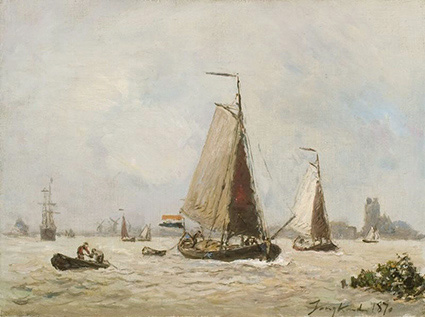
Voiliers navigant devant la port de Dordrecht
1870 - 24,6 x 32,5 cm - Oil on canvas
Kröller-Müller Museum, Otterlo, Netherlands >
Émile Zola wrote about Jongkind: "Jongkind is certainly not a master of splendid and monumental style, but a master of the deepest depths, who penetrates the multi-layered life of things with a rare suppleness."
Jongkind also initially learnt a different profession in a notary's office. But he was soon drawn to art. Trained in Holland, he travelled to Paris, where he met Courbet, Millet and, above all, Corot, whose paintings would become important milestones in his independent work. He alternated between great success and complete disregard in the art world and the Salon. Unlike Boudin, he never took part in an Impressionist exhibition, even though he was so close to them.
At the end of his life, he was unable to curb the alcohol addiction that had long held him in thrall, and he never recovered from a stroke in 1891.
Signac praised him as the first "marvellous pioneer" of Impressionism, Monet called him a "teacher in seeing", Pissarro and Manet greatly admired him. However, he was forgotten for a long time. Today, he is beginning to be recognised and appreciated again.
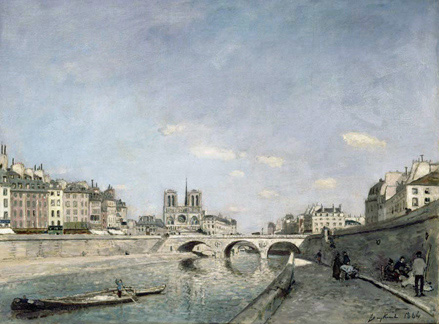
La Seine et Notre-Dame de Paris
ca. 1864 - 42 x 56 cm - Oil on canvas
Musée d'Orsay, Paris, France >
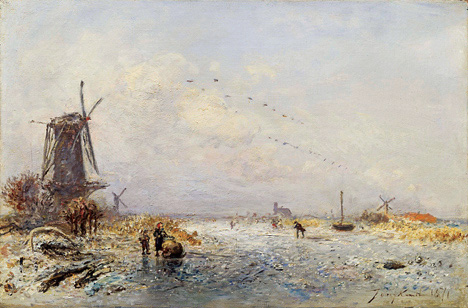
Paysage d'hiver
1871 - 21,9 x 32,4 cm - Oil on canvas
Private Property
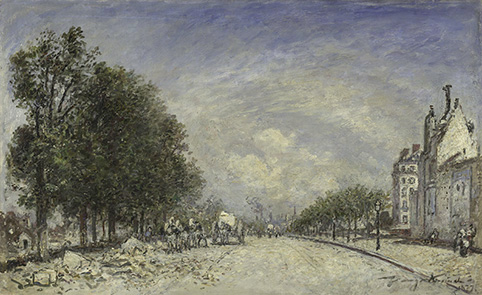
Le Boulevard de Port-Royal, Paris
1877 - 42 x 66 cm - Oil on canvas
The National Gallery, London, United Kingdom >
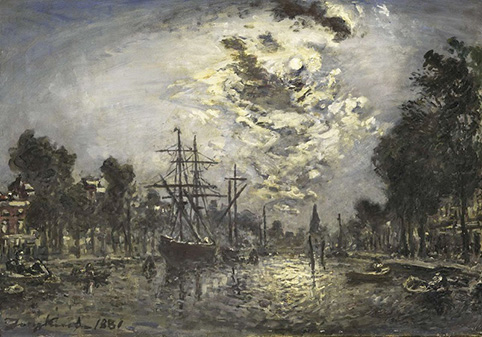
Rotterdam im Mondlicht
1881 - 34 x 46 cm - Oil on canvas
Rijksmuseum, Amsterdam, Netherlands >
The photography
As briefly mentioned in another part of this page, the inventions that led to photography played a very significant role on the road to Impressionism. In 1839, Louis Jacques Mandé Daguerre applied for a patent for photography, even though there was an earlier photograph by Joseph Nicéphore Niépce from 1826. However, Daguerre developed a practicable type of photography.
Joseph Niépce
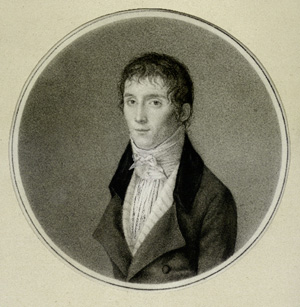
The first photograph:
above: plate of the first photograph, a heliograph by Nicéphore Niépce
below: Processed print of the plate
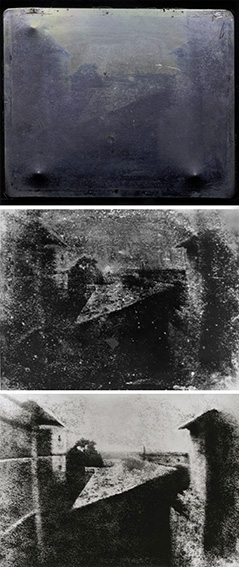
Louis Daguerre
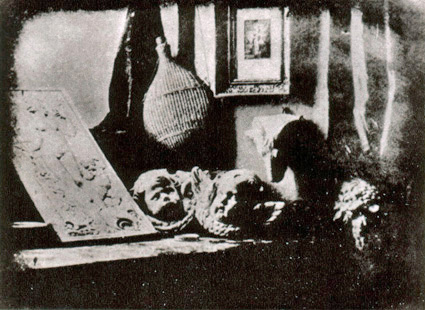
First photograph by Daguerre (1837)
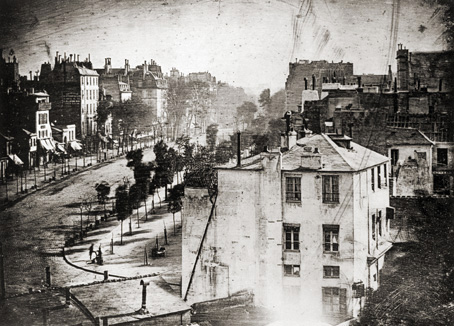
Considered to be the first photograph in which a human being can be seen. (1838)
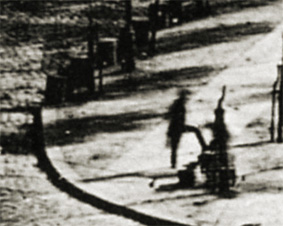
The man stayed in the same place long enough (detail)
perhaps with a shoeshine boy - that's why you can even see two people.
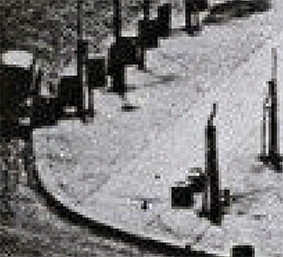
The same situation at a slightly different time in another photo by Daguerre (detail)
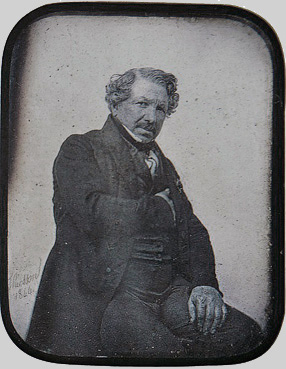
Louis Daguerre
In 1856, collotype printing was developed by Louis-Alphonse Poitevin, in which photos could be printed with astonishing accuracy using a wrinkled grain. This was perfected by Joseph Albert in 1867. Many photographic postcards from the period were printed using this process.
The common denominator of these then-new methods was light: The cause of the images is light. The basic structure of the image is the dot or the grain or a grid.
However, photography also showed people the 'captured brief' moment from reality.For the upcoming Impressionists, these were important aspects of their approach to art. They also tried to capture the moment. They too slowly dissolved the precise stroke, the drawing.
However, they were still far superior to photography in terms of colour and the format of the pictures. Some of the artists also utilised the new possibilities offered by photography.
Photo study by Eadweard Muybridge in 1878, which proved that a horse can have all its hooves in the air when galloping. This was doubted until that time.
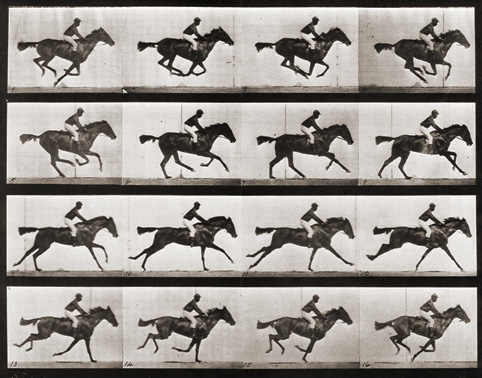
What new pictures they were - no painter had ever been able to depict a horse like that before. Degas was not the only one to utilise this new photographic perspective in his painting.
Académie Suisse
The Impressionists get to know each other
In the years from around 1859, the still young and eager-to-learn Impressionists got to know each other in Paris. Monet, who had come to a freer style of painting through Eugène Boudin, travelled to Paris and saw the paintings of Corot and Troyon, which made a great impression on him.
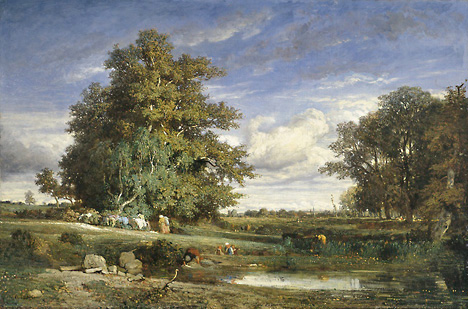
Constant Troyon - Le marais
1840 - 93 x 140 cm - Oil on canvas
Art Institute Chicago, Chicago, USA >
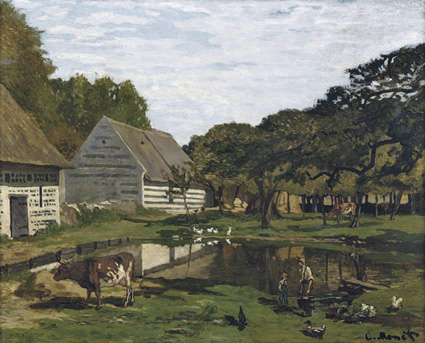
Claude Monet - Cour de ferme en Normandie
ca. 1863 - 65 x 81 cm - Oil on canvas
Musée d'Orsay, Paris, France >
Monet met the slightly older Camille Pissarro at the L'Académie Suisse. This was not an academy, but rather a studio where, for example, nude studies could be drawn and painted for a small fee. Camille Pissarro was influenced by Corot and initially painted in his style.
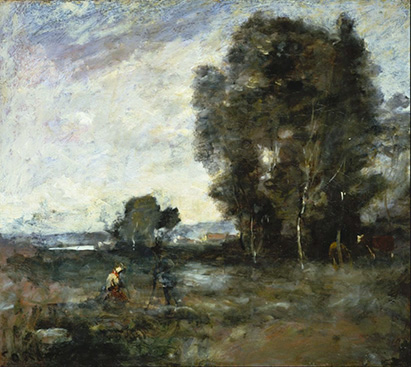
Camille Corot - Paysage d'été
1855/60 - 38 x 43 cm - Oil on canvas
Städel Museum, Frankfurt am Main, Germany >
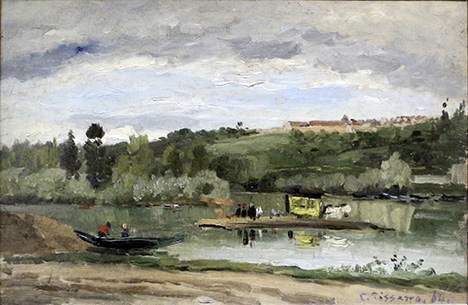
Camille Pissarro - Bac à la Varenne-Saint-Hilaire
1864 - 41 x 27 cm - Oil on canvas
Musée d'Orsay, Paris, France >
Two paintings by Édouard Manet were accepted at the Salon, one of which is the 'Spanish Singer', which caused a sensation despite its poor placement.
Manet also met Edgar Degas at this time, when he was working on a free copy in the Louvre. Very similar in their human manner, somewhat averse to bohemianism, the two soon became close friends. Degas had learnt painting while travelling in Italy and was still committed to the style of Ingres, which he soon abandoned. The Académie Suisse was not the right place for either painters.
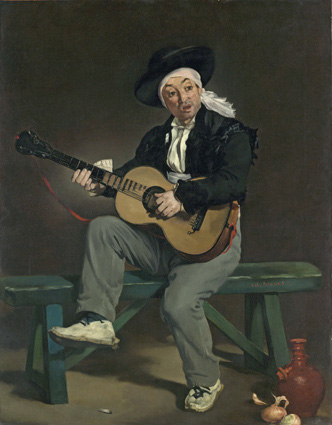
Édouard Manet - Le chanteur espagnol
1860 - 147 x 114 cm - Oil on canvas
Metropolitan Museum of Art, New York, USA >
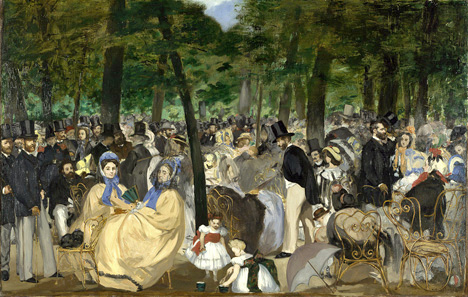
Éduard Manet - Concert aux Tuileries
1862 - 76 x 118 cm - Oil on canvas
National Gallery, London, United Kingdom >
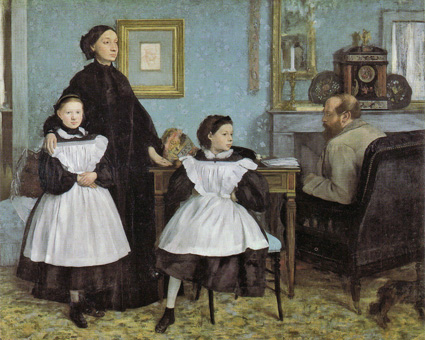
Edgar Degas - Portrait de famille
La famille Bellelli
1859 - 200 x 250 cm - Oil on canvas
Musée d'Orsay, Paris, France >
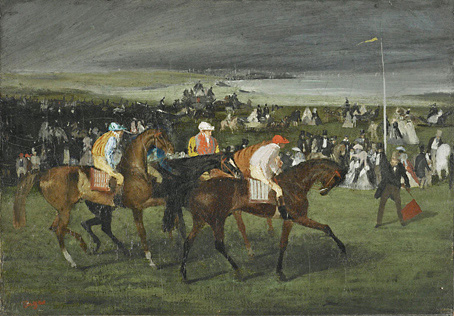
Edgar Degas - Aux courses. Le début
1860/62 - 33 x 47 cm - Oil on canvas
Fogg Art Museum, Cambridge, USA >
Camille Pissarro made many studies in the Paris region, but was frequently seen at the Académie Suisse. It was there that he became aware of Paul Cézanne. Cézanne had come from Aix-en-Provence to study painting.
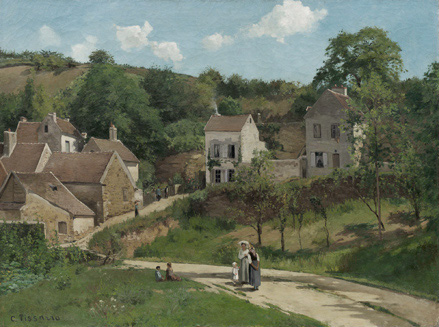
Camille Pissarro - La Hermitage à Pontoise
ca. 1867 - 151 x 200 cm - Oil on canvas
Solomon R. Guggenheim Museum, New York, USA >
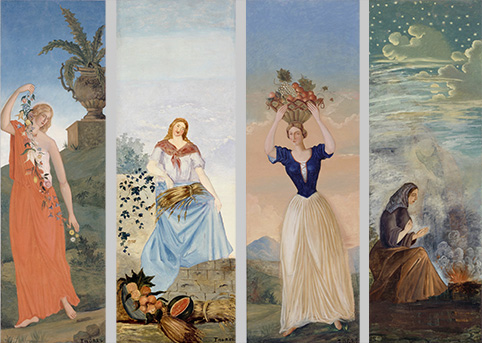
Paul Cézanne - Les Saisons
Le Printemps, L'Eté, L'Automne, L'Hiver
(intended as a parody of Ingres and signed "Ingres")
ca. 1860 - je 314 x 105 cm - Oil on canvas
Petit Palais, Paris, France >
Atelier Gleyre 1862/63
Claude Monet, who had been sent home to recuperate from military service in Algeria, met Jongkind in Le Havre in 1862. Jongkind broadened Monet's view of painting, which he had learnt from Boudin. After some discussion, Monet's father allowed him to train in Paris, but expected a 'well-known master' to take him into his studio and teach him painting. He was given an 'artistic guardian': Auguste Toulmouche, who was a cousin of Monet. He recommended Charles Gleyre as a teacher
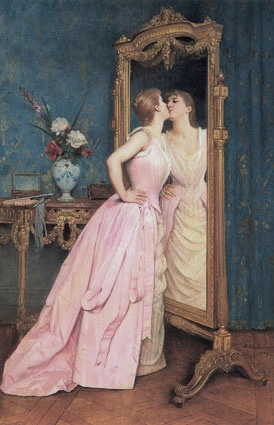
Auguste Toulmouche - Vanité
ca. 1870 - 73 x 48 cm - Oil on canvas
Private Property
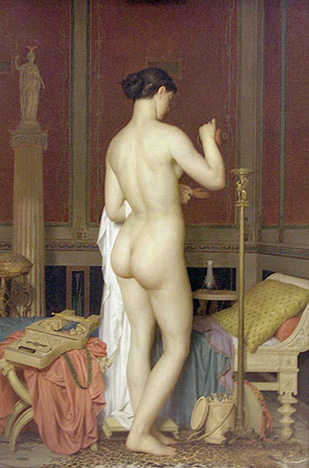
Charles Gleyre - Le coucher de Sappho
1867 - 108 x 72 cm - Oil on canvas
Musée cantonal des beaux-arts, Lausanne, Suisse >
Even though Monet did not feel comfortable in the Gleyre studio, he went there to fulfil his father's demands. A young Parisian appeared in the studio: Auguste Renoir. Monet and Renoir became friends. They were joined by Alfred Sisley - born in Dunkirk to English parents and particularly fond of the paintings of Turner and Constable. He was joined by Frédéric Bazille. The four of them formed their own group of outsiders in Gleyre's studio, as they differed greatly from the teacher and the other students in their painting style.
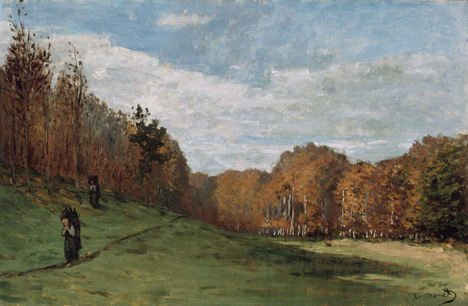
Claude Monet - Les collectioneurs de bois sur le bord de la forêt
1863 - 60 x 90 cm - Oil on wood
Museum of Fine Arts, Boston, USA >
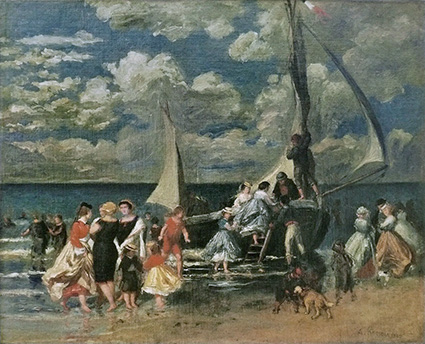
Auguste Renoir - Retour d'une partie de bateau
1862 - 51 x 61 cm - Oil on canvas
Private Property
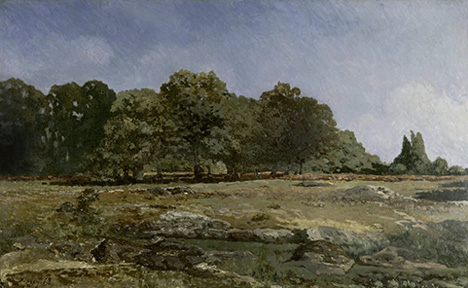
Alfred Sisley - L'avenue des châtaignes à Celle-Saint-Claude
1865 - 125 x 205 cm - Oil on canvas
Musée du Petit Palais, Paris, France >
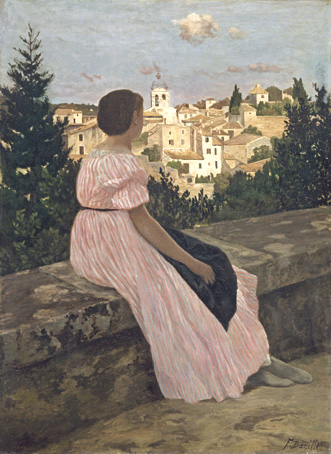
Frédéric Bazille - La robe rose
Vue de Castelnau-le-Lez
1864 - 147 x 110 cm - Oil on canvas
Musée d'Orsay, Paris, France >
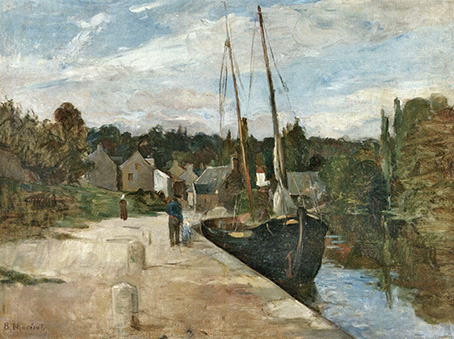
Berthe Morisot - Rosbras, Finistère
1866/67 - 55 x 73 cm - Oil on canvas
Private Property
Gleyre was basically a very lenient teacher and Renoir later said of him: Gleyre "did not actually help his pupils, but he would have preferred to let them work according to their inclinations." The budding Impressionists had almost complete freedom there, but they had great respect for their teacher.
Bazille and Monet painted together in Fontainebleau and moved to Honfleur in 1863. Bazille was killed in the war in 1870 and did not live to see the first Impressionist exhibition. His painting style is reminiscent of Courbet and his close friend Éduard Manet.
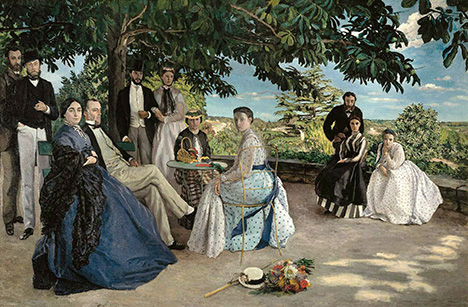
Frédéric Bazille - Réunion de famille - Portraits de famille
1867/68 - 152 x 230 cm - Oil on canvas
Musée d'Orsay, Paris, France >
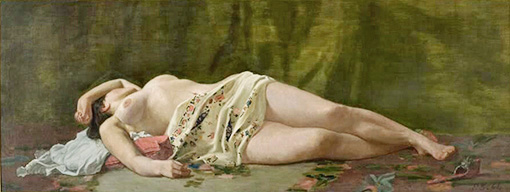
Frédéric Bazille - Nude Study
1864 - 70 x 190 cm - Oil on canvas
Musée Fabre, Montpellier, France >
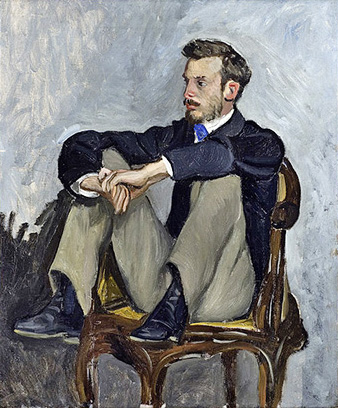
Frédéric Bazille - Portrait Renoir
1867 - 62 x 51 cm - Oil on canvas
Musée d'Orsay, Paris, France >
Salon des Refusés - 1863
In 1863, 3000 artists submitted around 5000 works of art to the Salon. This was due to the fact that a limit of a maximum of three pictures per artist had previously been announced. However, the jury then rejected three-fifths of the works.
There was massive criticism of the jury, which even reached Emperor Napoleon III. He ordered that a large proportion of the rejected works be shown in a separate exhibition, even though he himself considered the paintings to be extremely ugly.
This is how the "Salon des Refusés" came into being. However, the jury of the Salon intervened in the hanging of the pictures and placed works of art that they considered to be particularly bad in prominent positions. The intention was to show the public how miserable these 'refusés' were and to justify the jury's criticised decision at the Salon.Among others, paintings by were on display in this exhibition: Eduard Manet, Gustave Courbet, James McNeill-Whistler and also Johan Barthold Jongkind, Camille Pissarro, Paul Cézanne, Armand Guillaumin, Felix Bracquemond and the painter Henri Fantin-Latour. Even if some of these artists never took part in an Impressionist exhibition, they can still be categorised as belonging to this circle in a broader sense or are their teachers or role models.
One painting caused a sensation: Éduard Manet: 'Le Bain', later known as 'Breakfast on the Green'.
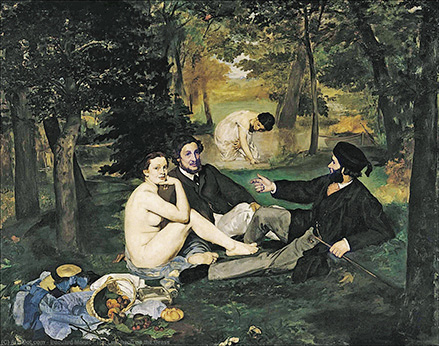
Édouard Manet - Le Déjeuner sur l'herbe
1863 - 208 x 264 cm - Oil on canvas
Musée d'Orsay, Paris, France >
Manet also exhibited other paintings, such as 'Mlle Victorine in the Costume of a Bullfighter'. Today, both works are all regarded as special examples of Impressionist art, but at the time they were laughed at.
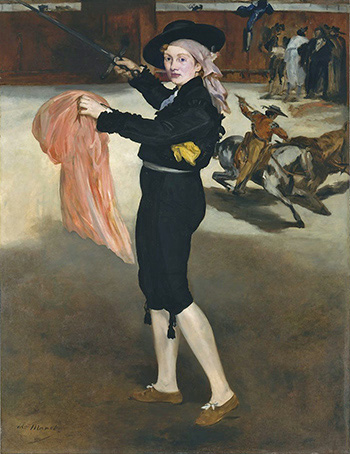
Édouard Manet - Mlle Victorine en costume d'un torero
1862 - 165 x 128 cm - Oil on canvas
Metropolitan Museum of Art, New York, USA >
Symphony in White, No. 1" by James McNeill-Whistler was exhibited.
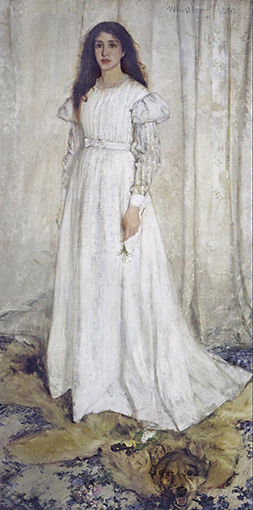
James McNeill-Whistler - Symphony in White, No. 1
Portrait of Joanna Hiffernan
1861/62 - 215 x 108 cm - Oil on canvas
National Gallery of Art, Washington, USA >
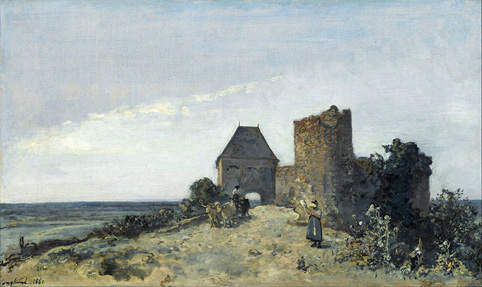
Johan Barthold Jongkind - Ruines du Château de Rosemont
1861 - 34 x 56 cm - Oil on canvas
Musée d'Orsay, Paris, France >
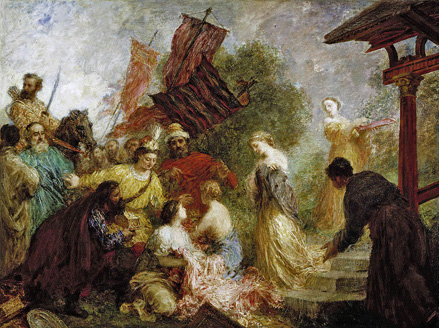
Henri Fantin-Latour - la féerie
1863 - 98 x 131 cm - Oil on canvas
Musée de Beaux Arts Montreal, Canada >
In the official Salon of the same year, the aforementioned painting by Cabanel 'Birth of Venus' was on display... That was the recognised art of the time!
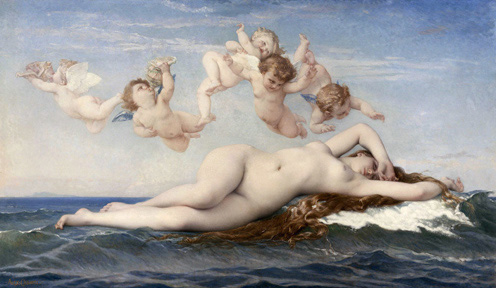
Alexandre Cabanel - Naissance de Vénus
1863 - 130 x 225 cm - Oil on canvas
Musée d'Orsay, Paris, France >
For the Salon of 1865, the jury was somewhat lenient and so some of the later Impressionists and those close to them were included in the exhibition. In addition to Éduard Manet, who exhibited his 'Olympia', there were, for example: Henry Fantin-Latour, Claude Monet, Auguste Renoir, Camille Corot, Alfred Sisley and Camille Pissarro. A pupil of Corot's appeared here for the first time: Berthe Morisot.
As was customary at the time, the hanging was very close together and also on top of each other, as the photos from the 1865 Salon show.
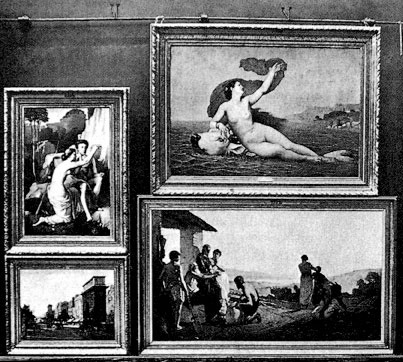
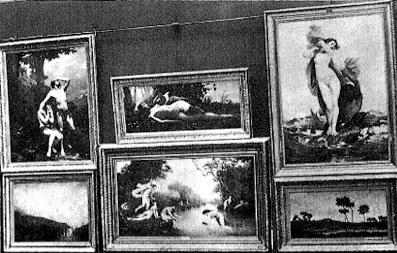
As the painters were shown in alphabetical order, Manet and Monet ended up in the same room. The two did not know each other until then and Manet refused to meet. Perhaps also because his Olympia was very poorly received by the public, while Monet's landscapes were mentioned rather favourably. The similarity of the names also led to some confusion. "I was only congratulated on a painting that wasn't mine. You'd think it was a bad joke!" said Manet.
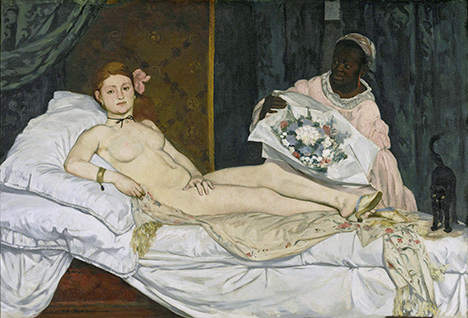
Éduard Manet - Olympia
1863 - 130 x 190 cm - Oil on canvas
Musée d'Orsay, Paris, France >
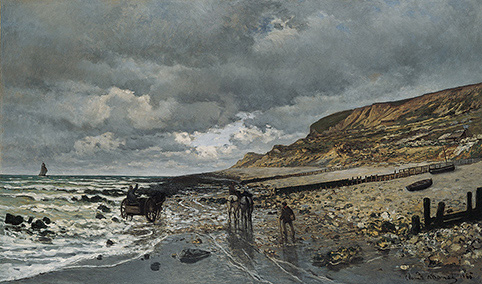
Claude Monet - La Pointe de la Hève à marée basse
1865 - 90 x 150 cm - Oil on canvas
Kimbell Art Museum, Fort Worth, USA >
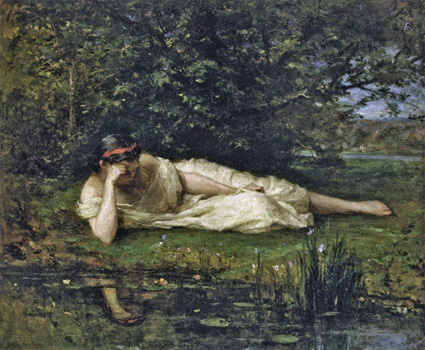
Berthe Morisot - Étude au bord de l'eau
1864 - 60 x 73 cm - Oil on canvas
Private Property
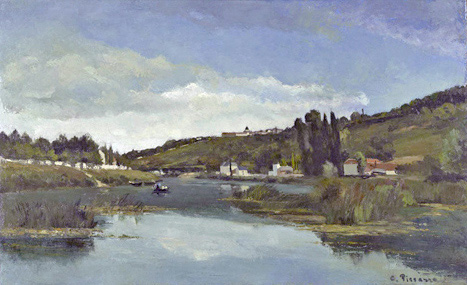
Camille Pissarro - Les Bords de la Marne à Chennevières
1864/65 - 91 x 145 cm - Oil on canvas
National Galleries Scotland, Edinburgh, Scotland >
Manet also had to endure bitter ridicule in the newspapers, as the caricatures of his work showed:
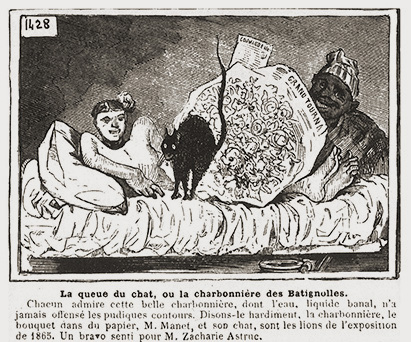
Charles Albert d'Arnoux called Bertall: La Queue du chat, on La Charbonniere des Batignolles
Caricature of Olympia by Manet, 1865 in L'Illustration
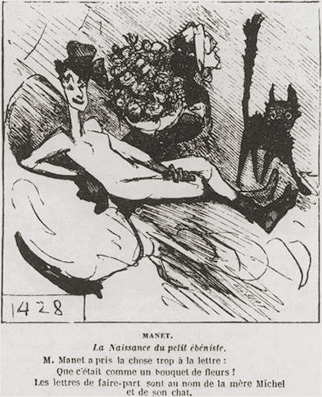
Cham (Amédée de Noé): La naissance du petit ébéniste
Caricature of Olympia by Manet, 1865 in 'Le Salon'
Ingres / Delacroix |
Gustave Courbet |
|
|---|---|---|
Imprint |
